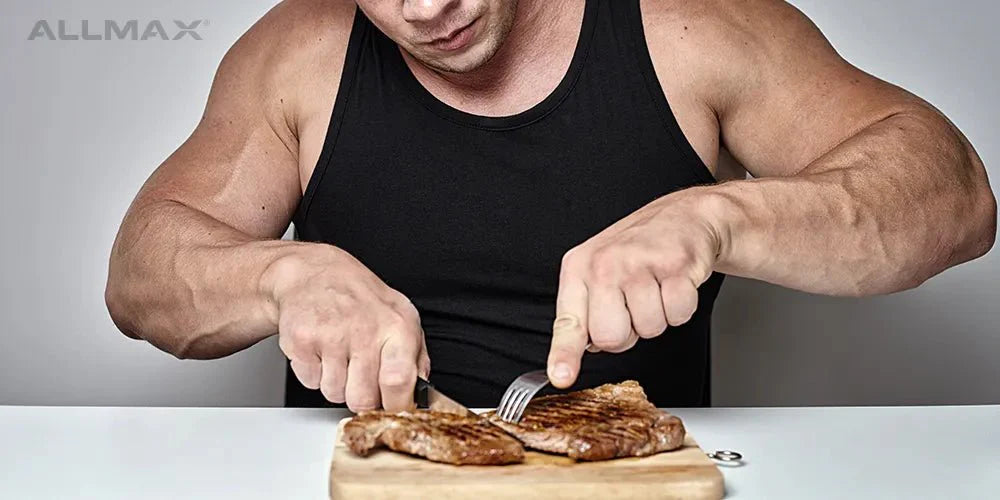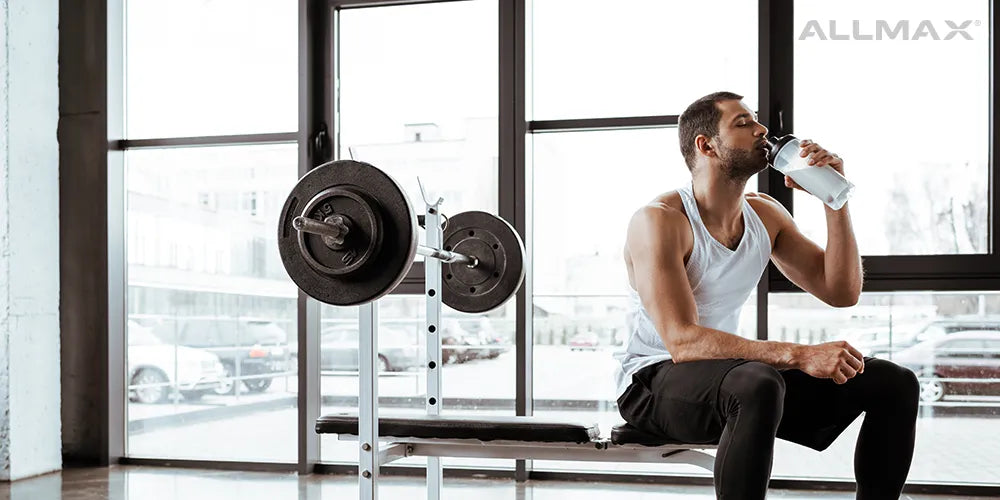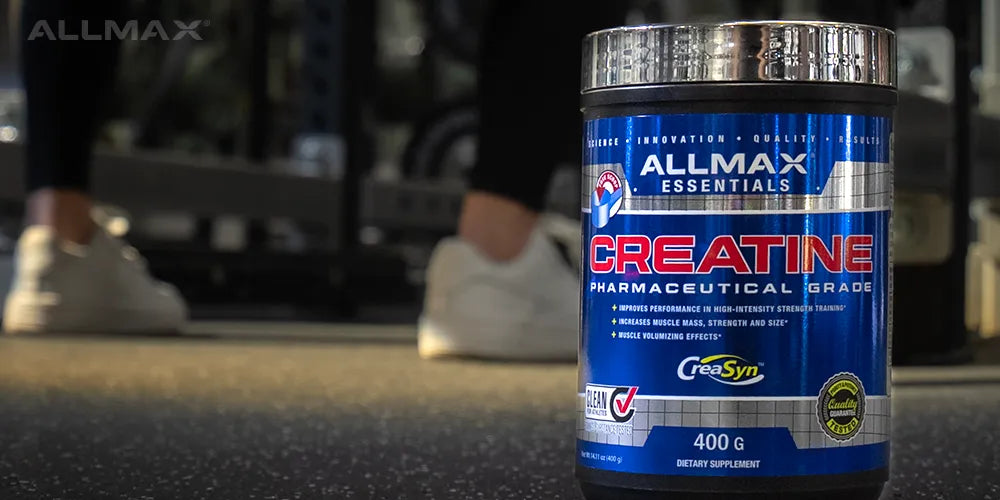You can gain lean muscle without overspending by planning meals around affordable proteins, carbs, and healthy fats while cooking in bulk. Smart grocery shopping, essential supplements like protein and creatine, and cost-conscious training options help maximize gains on a tight budget.
Table of contents
You don’t need a Nobel Prize in economics to see that the global economy is struggling.
Consumers are feeling the pinch, and many are focusing on just the essentials. For bodybuilders looking to bulk, this can be especially challenging—they need enough food not just to maintain their weight, but to build muscle too. The good news? You can still pack on size without spending a fortune. Here’s how to grow your muscles on a tight budget.
How to Bulk on a Budget? Prepare a Meal Plan
Adequate caloric intake is essential for gaining weight and while some food does indeed grow on trees, it’s often priced as if it doesn’t. There are plenty of healthy, inexpensive options, though. Two great, simple ways to save money are buying in bulk and shopping at No Frills grocery stores. If you’re forced to shop at a bigger chain, look for store-brand products that are virtually the same as their more expensive, brand-name counterparts. In addition, avoiding overly processed junk food will do wonders for your body and budget.
Protein
Protein is of primary concern as it provides the amino acids necessary for building muscle. Unfortunately, some cuts of meat can be quite expensive, but there are values to be found, such as:
Whey Protein Powder – ALLWHEY is one of our most affordable options, delivering 25 grams of high-quality protein per scoop.
Canned Tuna – bonus: no refrigeration necessary.
Chicken – a very lean protein source. Whenever possible, buy the whole bird for better value; canned options are also available for convenience.
Ground beef – packs in a lot of calories due to fat content.
Eggs – a great source of healthy fats in addition to protein.
Canned beans – a good source of fiber as well.
Cottage cheese – a versatile, slow-digesting source of protein.
Milk – liquid calories are less likely to fill you up.
Carbohydrates

Carbohydrates are the body’s main source of fuel, and you’ll need plenty of them if you want to grow. Some inexpensive, healthy choices are:
Potatoes and Yams – nutrient and calorie-dense.
Oats – very inexpensive in bulk.
Pasta – versatile and easy to prepare.
Frozen vegetables – cheaper and last longer than fresh.
Rice – calorie-dense and versatile.
Frozen and Fresh Fruit – full of vitamins and minerals.
Bread – great for any meal.
Fats
Dietary fat provides cushioning for internal organs, aids in digestion, and is the most dense energy source, packing in nine calories per gram. In addition, it usually tastes great, even on its own.
Peanut Butter – delicious and easy to eat.
Almonds – portable and high in protein.
Olive Oil – high in unsaturated fats, a great addition to any recipe.
Sunflower Oil – versatile and tasty.
Pumpkin and Sunflower seeds – convenient, can be purchased in bulk
Meal Prep for Bulking on a Budget
Preparing your meals in advance is one of the smartest ways to bulk without overspending. Batch planning and cooking help you manage portions, minimize food waste, and maintain a high-protein, calorie-dense diet without overspending.
1. Plan Your Meals Around Affordable Proteins
Focus on budget-friendly protein sources like chicken thighs, ground turkey, eggs, and canned tuna. These options are versatile, easy to cook in bulk, and provide the essential building blocks for muscle growth.
2. Choose Cost-Effective Carbs

Carbohydrates fuel your workouts and help you gain mass. Go for rice, oats, potatoes, pasta, and beans—they’re cheap, filling, and store well for meal prep.
3. Incorporate Healthy Fats
Don’t skip fats—they’re calorie-dense and crucial for hormone production. Affordable options include peanut butter, olive oil, and seeds. Adding just a tablespoon of oil or a handful of nuts can significantly increase your calorie intake.
4. Batch Cooking & Storage Tips
Cook in bulk at the start of the week and portion meals into containers. Freeze extras to keep them fresh longer. Label containers with the date and meal type to stay organized and reduce last-minute takeout temptations.
5. Keep It Simple & Repeatable
You don’t need gourmet recipes. Simple combos such as rice with chicken and veggies, or pasta with ground turkey and tomato sauce, are affordable, effective, and easy to rotate through the week.
Meal prepping not only saves money but also ensures you hit your macros consistently, making bulking on a budget both efficient and sustainable.
Supplements for bulking on a budget
If money is tight, you’ll want to focus on the essentials, namely protein and creatine.
Protein Powders
ISOFLEX – a great tasting, high-quality whey protein isolate that packs more protein per serving than most meats, usually at a lower cost. In fact, the 5 lb container of ISOFLEX provides 27 g of protein per serving at just $1.26 per serving (it contains 75 servings). Compare this to a chicken breast or a piece of steak.
ALLWHEY – a very versatile blend also featuring CLA and digestive enzymes. ALLWHEY is an economical form of protein. It is a blend of proteins that tastes great and can provide the nutrition for adequate bulk.
Hexapro Chocolate Protein Bars – Hexapro bars are a perfect addition to your bulking plan. Toss one in your gym bag for a convenient, high-protein snack that boosts your calories on the go! A box of 12 bars costs $34.99, which breaks down to just $2.92 per bar. A smarter, more muscle-friendly deal than many fast food options.
Creatine Supplementation
Micronized Creatine Monohydrate is the highest grade of creatine monohydrate, and like the rest of the Essentials Line, strips out the unneeded extras to save you money. Creatine supplements can lead to a gain in lean muscle mass, improve workout performance, and enhance strength and power. It also offers therapeutic benefits, including the prevention of ATP depletion, stimulation of protein synthesis, and cell volumization.
Weight Training

Last but certainly not least – the gym. Obviously, lifting weights is the core of any attempt to put on muscle, but gym memberships can be expensive, often due to the unnecessary amenities provided at fitness centers. Before you choose to purchase a new gym membership or update an old one, do some research. Some important points to consider:
Hidden Costs
Does your gym feature a lot of extras, such as saunas and snack stands, that you’re not using? Are there other gyms in your area that have just the essentials? Is your gym so far away that you’re wasting gas money?
Discounts
Will your gym match membership prices with competitors? Can you get a group/family discount rate? If you’re renewing a membership, shouldn’t you get a lower rate for your loyalty? Does your employer offer discounts as part of a healthcare program? If all else fails, you can try to strike a deal with the manager. Recently, haggling has become a popular way for cash-strapped consumers to stretch their paychecks.
Build a Home Gym on a Budget
If the cost of a gym membership is out of your reach, don’t despair. Many used sporting equipment stores have weight-lifting sets, and eBay and Craigslist are full of discounted (possibly free!) gym equipment so you can lift at home. Keep these tips in mind and you’ll find out how easy it is to get huge, even if your budget isn’t.
References
- Vieira, S. A., McClements, D. J., & Decker, E. A. (2015). Challenges of utilizing healthy fats in foods. Advances in Nutrition, 6(3), 309S-317S.
- Banik, S., & Hossain, M. (2014). A comparative overview on good fats and bad fats: Guide to control healthy body. Int. J. Health Sci, 2, 41-44.



